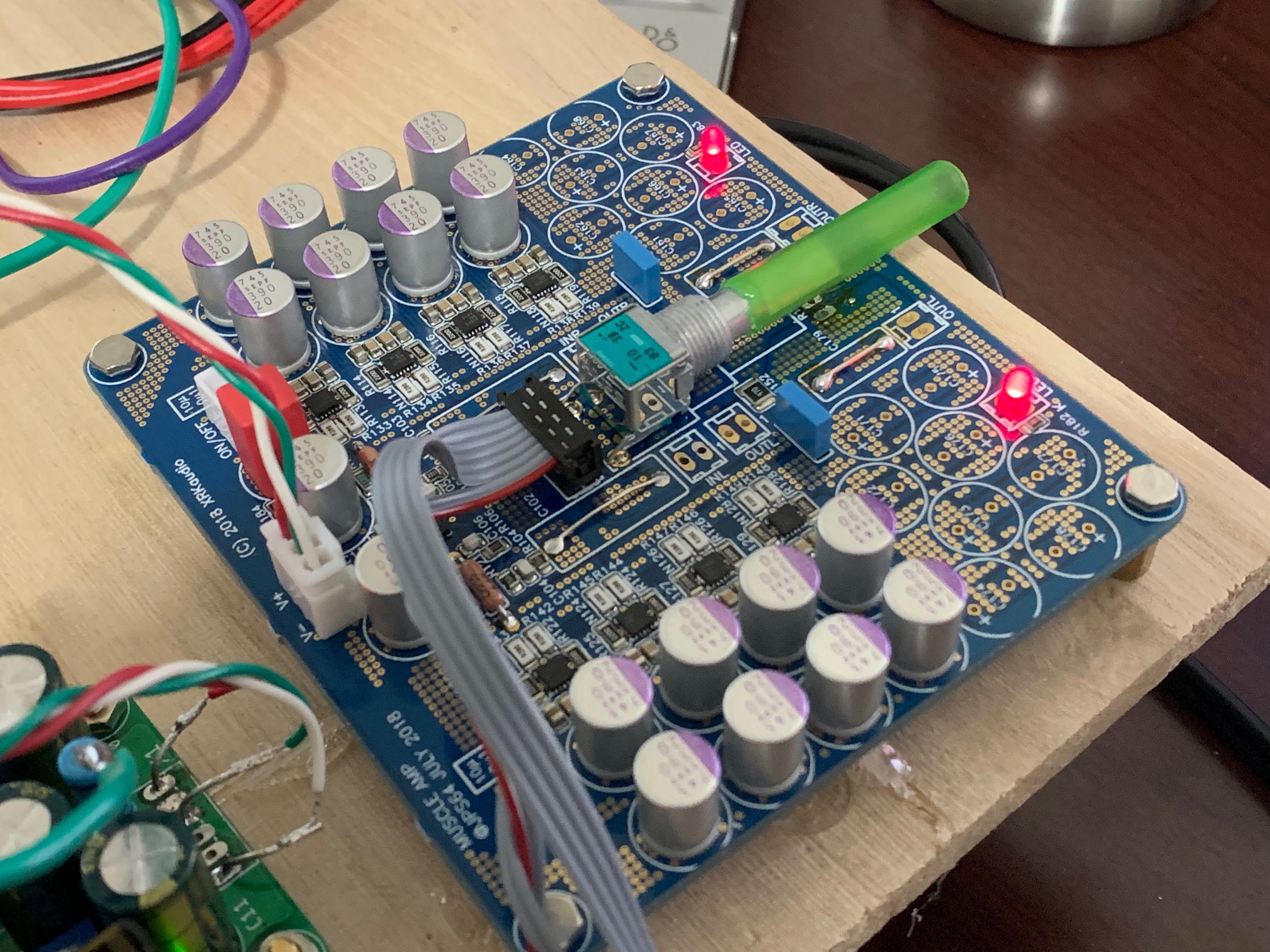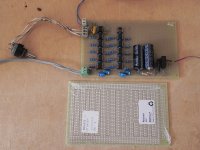I've heard of paralleling transistors to get lower noise. Can this successfully done with op amps? Say, a pair of LM4562s to lower the noise floor by 3db?
Yes. Because noise is an uncorrelated signal...
Paralleling Amplifiers Improves Signal-to-Noise Performance | Analog Devices
Paralleling Amplifiers Improves Signal-to-Noise Performance | Analog Devices
Interestingly i have never seen this done in commercial mc phono stages, which is the only spot where noise really matters. Apparently the increased complexity of routing and the added cost makes it unattractive compared to just adding a parallel transistor array at input. Remember, each opamp will need individual gain setting resistors and ps decoupling caps.
Joachim Gerhard has done it in one of his designs. I think he had 4 or 8 in parallel.
It's relatively expensive, not only in opamps but also in larger power requirements.
Linear Audio Vol 0.
Jan
It's relatively expensive, not only in opamps but also in larger power requirements.
Linear Audio Vol 0.
Jan
Attachments
Last edited:
Yes, as long as each op-amp has its own feedback network (as analog_sa already wrote) and there is a network at the output that averages the outputs of the individual op-amps. Mind you, only the equivalent input noise voltage goes down, the equivalent input noise current goes up.
A good example is the moving-coil version of the Elektor Supra 2.0, which uses four LT1028 stages. An exceptionally bad example is the moving-magnet version of the Elektor Supra 2.0. It also uses four LT1028 stages, but with moving-magnet impedances and LT1028 op-amps, noise current is very dominant, so connecting several stages in parallel is the worst thing you could do.
A good example is the moving-coil version of the Elektor Supra 2.0, which uses four LT1028 stages. An exceptionally bad example is the moving-magnet version of the Elektor Supra 2.0. It also uses four LT1028 stages, but with moving-magnet impedances and LT1028 op-amps, noise current is very dominant, so connecting several stages in parallel is the worst thing you could do.
Hello,
- Paralleling transistors for noise
Paralelling OP also increase the output current:
- The 5532 OpAmplifier, part 1 | Elektor Magazine
- Paralleling transistors for noise
Paralelling OP also increase the output current:
- The 5532 OpAmplifier, part 1 | Elektor Magazine
Joachim Gerhard has done it in one of his designs.
Thanks for this reminder. JG must be the most prolific phono stage designer on the planet. He seems to have explored all topologies and ideas

Thanks for the link!! Excellent article, and just the info I was looking for. However, according to my calculations, it would only result in an improvement in S/N if the source impedance is below ~1.3KΩ, due to the accompanying increase in current noise along with the decrease in voltage noise.Yes. Because noise is an uncorrelated signal...
Paralleling Amplifiers Improves Signal-to-Noise Performance | Analog Devices
Last edited:
The principle is discussed quite completely in the original LT1028 data sheet.
The AD article has some content from there.
I have driven that quite far for a measurement amplifier, but then, the number
of op amp pairs actually populated is up to the user.
http://www.hoffmann-hochfrequenz.de/downloads/lono.pdf
When I find the password for my web site, I will upload an update.
There is an alternative FET version, too. Also under the theme
"Plowing with the power of a thousand chicken".
I'm not Joachim Gerhard.
cheers, Gerhard
The AD article has some content from there.
I have driven that quite far for a measurement amplifier, but then, the number
of op amp pairs actually populated is up to the user.
http://www.hoffmann-hochfrequenz.de/downloads/lono.pdf
When I find the password for my web site, I will upload an update.
There is an alternative FET version, too. Also under the theme
"Plowing with the power of a thousand chicken".
I'm not Joachim Gerhard.
cheers, Gerhard
Hello,
- Paralleling transistors for noise
Paralelling OP also increase the output current:
- The 5532 OpAmplifier, part 1 | Elektor Magazine
Paralleling op-amps is used for these purposes a lot by Douglas Self.
Last week I finished a (low) power amp inspired by his Elektor article, using one NE5532 for an active volume control and as a driver for the ouput stage where twenty NE5532 voltage followers are in parallel.
Attachments
Here is an amp with 8x parallel OPA1622’s. Good for about 10w into 8ohms. Can drive any headphone cleanly.
Cheap as Chips OPA1688 Low-THD Muscle Amp

Cheap as Chips OPA1688 Low-THD Muscle Amp
Here is an amp with 8x parallel OPA1622’s. Good for about 10w into 8ohms. Can drive any headphone cleanly.
Cheap as Chips OPA1688 Low-THD Muscle Amp
Did you solder those OPA1622 by hand? if so, great job!
- Status
- Not open for further replies.
- Home
- Source & Line
- Analog Line Level
- Parallel op amps

